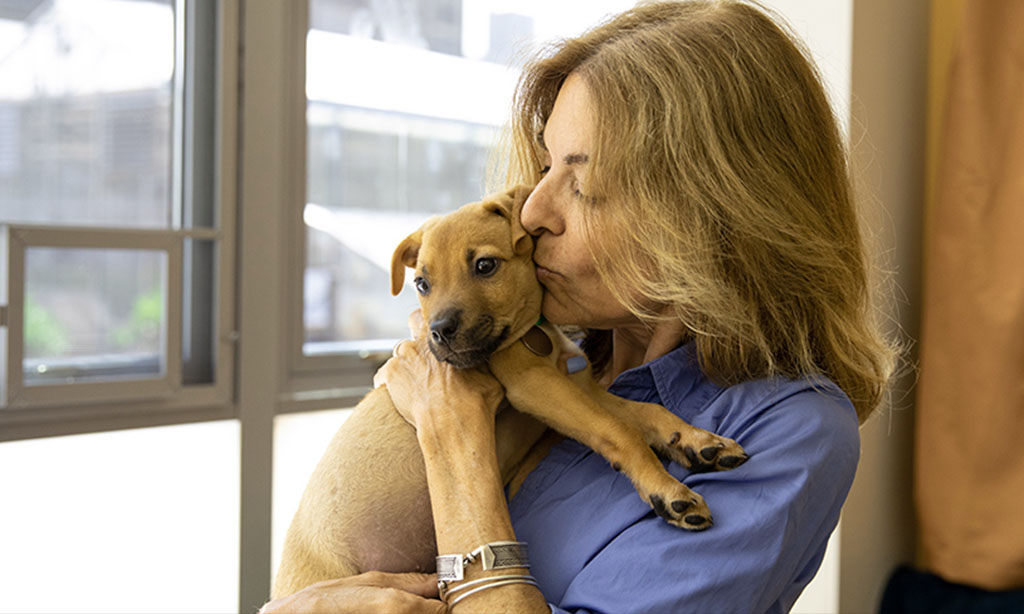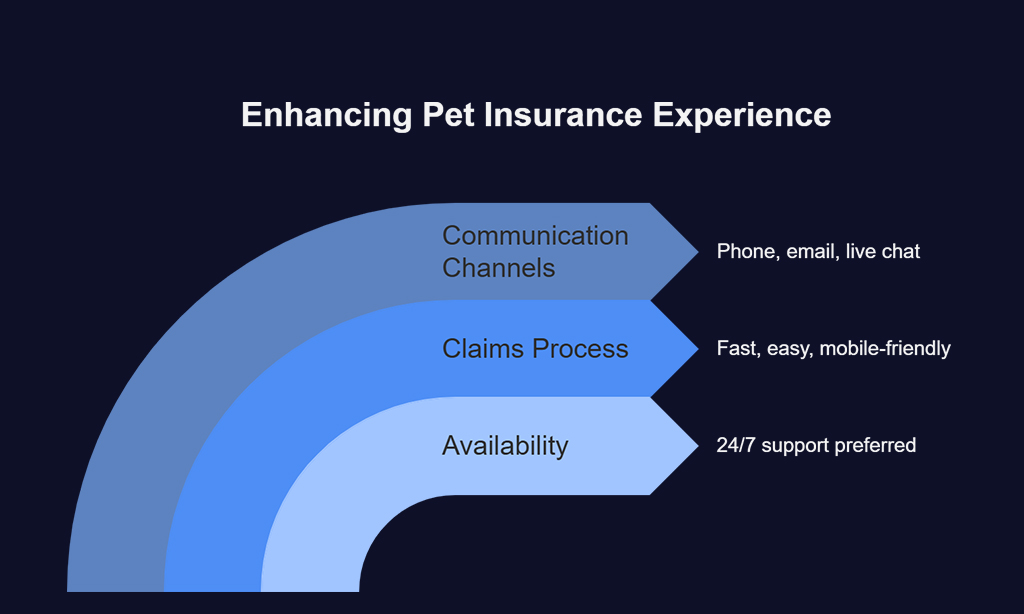Owning a pet brings immense joy and companionship, but it also comes with its share of financial responsibilities, especially when it comes to your pet’s health.
In 2025, the need for comprehensive pet insurance has never been greater. Veterinary care can be expensive, and without the right insurance, unexpected treatments or accidents can strain your finances.
This guide delves deep into the 10 features to look for in pet insurance policies, offering pet owners the tools to make informed, confident choices for their pets’ health.
As we explore these features, we’ll provide real-world examples, practical tips, and current trends in the pet insurance industry, ensuring you find the best policy to meet your and your pet’s needs. Let’s get started.
Why Pet Insurance is Essential for Pet Owners
With the increasing costs of veterinary treatments, pet insurance has evolved into a necessity for pet owners. As technology and veterinary care advance, so do the costs of diagnostics, treatments, and surgeries. Pet insurance acts as a financial safety net, covering unexpected veterinary bills that can otherwise put a huge dent in your budget.
Veterinary care for pets in 2025 continues to expand in terms of options, with new technologies like robotic surgery, advanced diagnostics, and specialty care. However, these developments come with higher price tags. Without pet insurance, pet owners could be facing large, unmanageable medical bills. Having a policy in place protects not only your wallet but also your pet’s well-being.
Understanding the Growing Importance of Pet Insurance Policies
In 2025, the pet insurance market is booming, with more providers and policies than ever before. In fact, 66% of pets in the U.S. are now covered by some form of insurance, according to the North American Pet Health Insurance Association (NAPHIA). As the awareness around the importance of pet insurance grows, pet owners are more educated about the need for good coverage.
Pet insurance policies in 2025 also offer more personalized options than ever, allowing pet owners to choose plans tailored to their pet’s specific needs. Whether it’s a breed prone to certain illnesses or an aging pet needing frequent check-ups, modern pet insurance can cater to those requirements.
Key Features to Look for in Pet Insurance Policies in 2025
When searching for the right pet insurance policy in 2025, it’s essential to focus on specific features that provide optimal coverage and financial protection. Here are the 10 key features to look for in pet insurance policies to ensure your pet gets the best care and protection.
1. Comprehensive Coverage for Veterinary Care
Comprehensive coverage ensures that all aspects of your pet’s health are covered, from routine visits to unexpected emergencies. Without adequate coverage, even a minor health issue could result in major out-of-pocket expenses.
| Treatment Type | Covered in Comprehensive Plans |
| Routine Check-ups | Yes |
| Vaccinations | Yes |
| Emergency Visits | Yes |
| Surgery and Specialty Care | Yes |
| Diagnostics (X-rays, Ultrasounds) | Yes |
Coverage for Routine and Emergency Visits
A comprehensive policy ensures your pet is covered for both regular checkups and emergency visits. Routine veterinary care helps keep your pet healthy and detect early signs of illness, while emergency care ensures your pet gets the treatment they need without financial hesitation.
Example: A common example is an emergency visit for a pet who swallowed something harmful. Without comprehensive coverage, the cost for emergency surgery or treatment can exceed $1,000.
Surgery and Specialist Treatments
As pets age, or in the case of serious accidents, specialized treatments and surgeries may become necessary. Comprehensive plans often cover such needs, including cancer treatment, orthopedic surgery, and other specialist services, which are critical for your pet’s well-being.
Case Study: A 7-year-old Labrador, Max, required orthopedic surgery after an accident. His surgery cost $2,500, but with a comprehensive insurance plan, the owner only paid $250 out-of-pocket, showcasing the value of good coverage.
2. Customizable Plans for Individual Pet Needs
Every pet is different, and so are their health care needs. A good pet insurance policy should allow flexibility so you can tailor it to your pet’s breed, age, and unique health risks.
| Customization Aspect | Options Available |
| Breed-specific Coverage | Yes (e.g., hip dysplasia in large dogs) |
| Age-based Coverage | Yes (more extensive coverage for older pets) |
| Pre-existing Conditions | Coverage options vary |
| Deductibles and Limits | Adjustable to fit budget |
Tailoring Coverage Based on Breed, Age, and Health
Some breeds are more susceptible to certain diseases, like hip dysplasia in large dogs. With customizable coverage, you can ensure that these breed-specific conditions are covered. Similarly, older pets may need more frequent checkups, which can be covered through customized plans that provide additional preventive care.
Example: A policy that tailors coverage to a Golden Retriever (known for hip problems) will include more extensive orthopedic care, helping cover surgeries or physical therapy needed as the dog ages.
Flexible Deductibles and Coverage Limits
Pet insurance providers typically offer flexibility when it comes to deductibles and coverage limits. This allows you to choose a plan that suits your budget while maintaining adequate protection. Some policies even allow you to adjust the deductible amount annually to match your financial situation.
3. Reimbursement Options and Payment Flexibility
Understanding how your pet insurance provider handles reimbursements is crucial to ensuring you can get the care your pet needs without financial strain.
| Reimbursement Method | Key Features |
| Direct Payment to Vet | Reduces out-of-pocket expenses upfront |
| Reimbursement after Payment | Flexible but requires you to pay upfront and submit receipts |
| Reimbursement Percentage | Typically 70% to 90% of covered expenses |
Direct Payment vs. Reimbursement
Some insurance companies offer direct payments to your vet, eliminating the need for you to pay upfront. This can make a significant difference in a financial emergency. Others operate on a reimbursement basis, meaning you’ll pay the full bill and submit your receipts for reimbursement.
Understanding Reimbursement Percentages and Caps
Most insurers will cover anywhere between 70% and 90% of your vet bills. However, reimbursement may come with caps, so it’s essential to check if there are limits on specific treatments or an annual payout maximum. Be aware of what’s covered and under what conditions.
4. Preventive Care Coverage
Preventive care is an increasingly sought-after feature in pet insurance policies. Covering things like vaccinations, dental care, and wellness checkups can help detect and treat issues early before they escalate into more serious (and expensive) problems.
| Preventive Care | Coverage Available |
| Vaccinations | Covered |
| Wellness Check-ups | Covered |
| Dental Cleanings | Covered or add-on option |
| Flea/Tick Preventatives | Sometimes covered |
Vaccinations, Wellness Checkups, and Dental Care
Many insurance policies now include coverage for vaccinations and wellness exams. Some policies even extend to dental care, which is becoming an essential part of keeping pets healthy. Early detection through these routine visits can prevent costly medical issues down the line.
Example: An insured pet may undergo an annual check-up and receive vaccinations for diseases like rabies and distemper, preventing potentially serious conditions. This preventive care may cost hundreds without insurance, but it’s typically covered in a comprehensive pet insurance plan.
How Preventive Care Can Save Money in the Long Run
By addressing potential health issues before they become major problems, preventive care can help avoid costly surgeries and treatments. For instance, catching a heart condition early could result in less expensive, non-invasive treatments, potentially saving thousands in the long run.
5. Exclusions and Limitations in Coverage
One of the most important features to review is the policy’s exclusions. No insurance policy is all-encompassing, and knowing what’s excluded ensures that you don’t get caught by surprise when filing a claim.
| Common Exclusions | What’s Not Covered |
| Pre-existing Conditions | Often not covered |
| Cosmetic Procedures | Usually excluded |
| Hereditary Conditions | Coverage varies |
Common Exclusions in Pet Insurance Policies
It’s essential to understand common exclusions in pet insurance policies. For example, most providers exclude pre-existing conditions, meaning any health issues your pet had before the policy started may not be covered. Cosmetic procedures such as grooming or elective surgeries are typically excluded as well.
How to Find Transparent and Clear Policy Terms
Look for policies that clearly outline their exclusions and limitations. Reading the fine print is critical to avoid surprises when it’s time to file a claim. A transparent policy should clearly specify which conditions and treatments are excluded upfront.
6. Multi-Pet Discount Options
If you have more than one pet, taking advantage of multi-pet discounts can help reduce the cost of insurance while ensuring all your pets are covered.
| Pet Count | Typical Discount |
| 2 Pets | 5% – 10% discount |
| 3+ Pets | 10% – 15% discount |
How Insurance Providers Incentivize Multiple Pets
Many pet insurance companies offer discounts for insuring more than one pet. If you have multiple pets, it’s worth looking for providers that offer multi-pet discounts. This can significantly reduce the overall premium cost.
Maximizing Savings on Multiple Pet Policies
When insuring multiple pets, balance the discount with the level of coverage each pet needs. Ensure that each pet is adequately covered, rather than opting for the cheapest plan just to save money.
7. Customer Support and Claims Process
Responsive customer service and an easy claims process are often overlooked, but they play a huge role in your experience with pet insurance.
| Support Features | Key Elements |
| Availability | 24/7 support preferred |
| Claims Process | Fast, easy, mobile-friendly |
| Communication Channels | Phone, email, live chat |
Accessible and Responsive Customer Service
In the event of an emergency or a claim, having easy access to responsive customer service is vital. Some insurers offer 24/7 support, while others have specific hours. The faster you can get answers, the smoother your experience will be.
Steps to File a Pet Insurance Claim Efficiently
An easy-to-use mobile app or online portal for filing claims speeds up the process. Ensure that the insurer has a straightforward claim filing system that minimizes the paperwork and time required to get reimbursed.
8. Waiting Periods and Coverage Start Dates
Waiting periods are an important consideration when choosing a pet insurance policy. This period is the time you must wait after purchasing the insurance before certain benefits become active.
| Coverage Type | Typical Waiting Period |
| Accident Coverage | 1 – 7 days |
| Illness Coverage | 14 – 30 days |
| Orthopedic Conditions | 6 months or more |
Typical Waiting Periods for Pet Insurance Policies
Most pet insurance policies impose waiting periods before they cover certain treatments. Accident coverage is often immediate, but illness and orthopedic care may have longer waiting periods, ranging from 14 to 30 days.
How Waiting Periods Impact Your Pet’s Coverage
Be aware of these waiting periods when you sign up for coverage. If your pet needs treatment immediately, ensure that your policy doesn’t have a long waiting period for critical conditions like accidents or illnesses.
9. Policy Renewal and Continuity of Coverage
Ensuring that your pet insurance coverage remains consistent is essential, especially as your pet ages.
| Renewal Features | Key Aspects |
| Lifetime Coverage | Available in many plans |
| Age Limits | Some policies limit coverage after a certain age |
The Importance of Ongoing Coverage for Aging Pets
As pets get older, they’re more likely to develop chronic conditions that require consistent care. A policy that offers lifetime coverage is crucial for older pets to avoid the loss of coverage due to age.
Avoiding Gaps in Coverage During Policy Renewal
Make sure that your pet insurance provider has a straightforward renewal process and does not impose any gaps in coverage, especially when transitioning between policies or after a claim.
10. Price vs. Coverage: Finding the Best Value for Your Pet
Finally, one of the biggest challenges for pet owners is balancing the cost of premiums with the level of coverage provided. You want a policy that fits your budget while ensuring comprehensive care for your pet.
| Policy Cost | Considerations |
| Lower Premiums | May offer less coverage |
| Higher Premiums | More comprehensive coverage |
Analyzing the Cost of Pet Insurance
While it’s tempting to choose the least expensive policy, keep in mind that it might not provide the level of coverage your pet needs. Compare what’s covered under various plans, and assess whether the lower premium is worth the sacrifice in coverage.
Balancing Price with Quality Coverage
Take the time to evaluate the benefits of higher premiums for more extensive coverage. Sometimes, paying a bit more each month will save you thousands in the event of an emergency or long-term treatment.
Takeaways
Finding the right pet insurance policy requires an understanding of the features to look for in pet insurance policies and how they align with your pet’s needs.
From comprehensive veterinary coverage to flexible payment options, the features discussed in this guide will help you make an informed decision.
By balancing price with coverage, considering your pet’s unique health needs, and choosing a provider with responsive support, you’ll be well on your way to ensuring your pet’s health and your financial security.








































